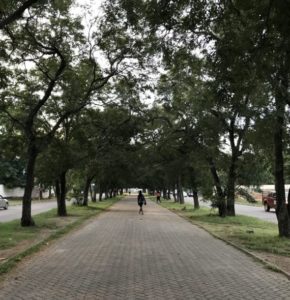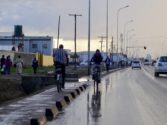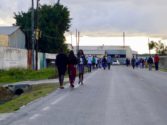May 10, 2018
Creating Space for Pedestrians and Cyclists in Zambian Cities
Zambia, a landlocked country in southern Africa, is home to over 16 million people. It is one of the most urbanized countries in Africa, with 44 percent of the population concentrated around a few major cities in the south-central and northwest of the country: Lusaka, the capital, and the Copperbelt Province, a major economic hub.
ITDP Africa is developing a non-motorized transport strategy for Zambia, in partnership with a series of stakeholders, including the Ministry of Transport and Communications, Ministry of Local Government, the UN Environment Share the Road program, and the UN Development Program. Building on Zambia’s National Transport Policy, the strategy will lay out a clear roadmap for government action to improve the walking and cycling environment and catalyze investment in non-motorized transport (NMT).

Efficient mobility is critical to the prosperity of Zambia’s cities. Despite low car ownership, Lusaka experiences severe traffic congestion, making it difficult for residents to access economic and educational opportunities. The majority of trips in Lusaka are made by walking, followed by transit, and with only around ten percent of trips made by car. Unfortunately, as is common in cities around the world, the priorities on the street do not serve the needs of the majority.
Over recent years, the government has begun to invest significant sums in road infrastructure through projects such as the L400 initiative in Lusaka and the Ndola road improvement project. Yet poor designs and enforcement have contributed to a major human and economic toll. According to the Zambia Road Safety Trust, the county experienced 32,392 crashes in 2014, resulting in the deaths of 1,858 road users. In Lusaka, over half of the victims are pedestrians and cyclists, representing a high burden among the most vulnerable road users.

Promising initiatives are leading the way to a safer environment for pedestrians and cyclists in Zambian cities. During a recent visit, ITDP met with the city government of Kitwe, where Mayor Christopher Kang’ombe launched the Pave Kitwe project to build high-quality pedestrian walkways. The mayor has secured private sector funds to cover the cost of materials, while the city government supplies the labour.
In Lusaka, the NGO Amend is working with schools and city authorities to implement safe slow-speed zones in school areas. These improvements have included new paving of footpaths, drainage, tabletop pedestrian crossings, signage, and road markings.
Over the coming months, ITDP will continue to work with stakeholders to gather input for the NMT strategy, with consideration to vulnerable groups, especially children, the elderly, and persons with disabilities.





